Brexit: A brief history of Britain and the EU
- Published
- comments
Britain has been part of a club of countries called the European Union, or EU, since 1973.
In a referendum, held on 23 June 2016, the majority of adult Britons voted to leave the EU.
On 29 March 2017 the countdown to the UK formally leaving the EU, also known as Brexit, began.
Here's a timeline of the key events leading up to the EU referendum and what happened next.
1957
The European Economic Community (EEC) is set up by six countries; Belgium, France, Germany, Italy, Luxembourg and the Netherlands. The EEC would later become the EU.
The EU is a political and economic union of 28 countries that trade with each other and allow citizens to move easily between the countries to live and work. It started out as the EEC with just six countries.
1973
Britain finally joins the EEC, having been rejected twice previously by the then French President, Charles de Gaulle.
1975
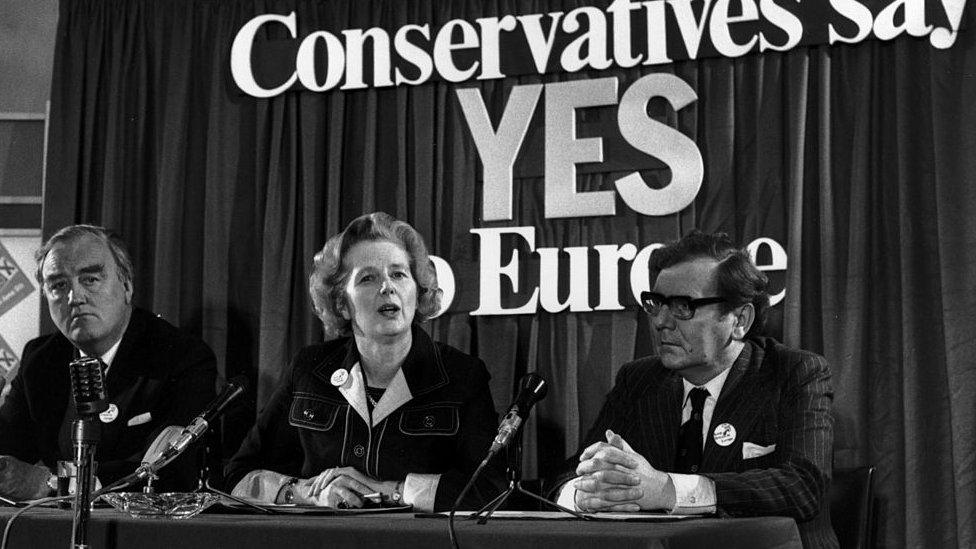
In 1975 the Conservatives campaigned to stay in Europe and Labour campaigned to leave
The new Labour government holds a referendum on whether to stay in the European communities, the result is to remain.
In 1983 the Labour Party's election manifesto called for complete withdrawal from the EU.
2013
David Cameron promises a referendum if the Conservatives win the election.
2015
The Conservatives win the election.
23 June 2016: The UK votes to leave the EU
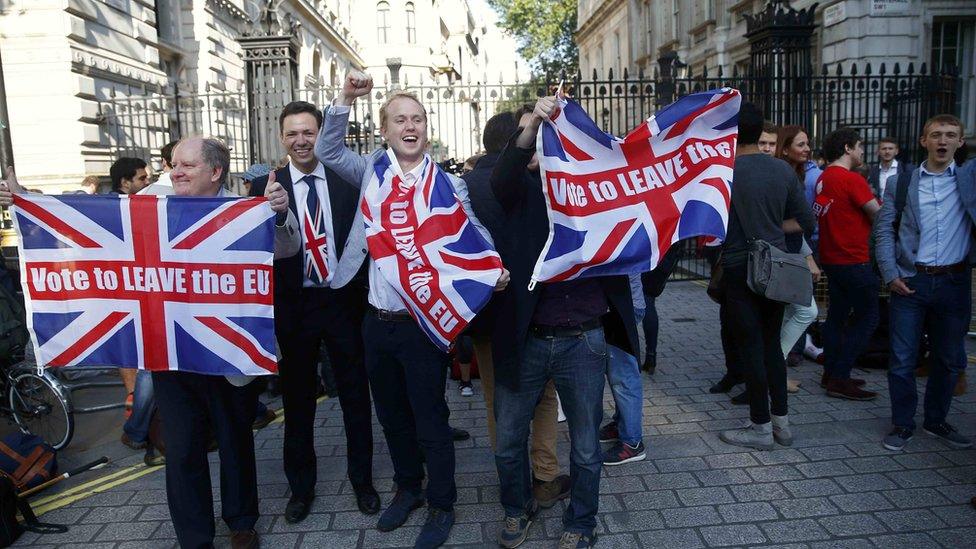
Vote Leave supporters celebrate outside Downing Street
Following a referendum Britons vote 52 percent to 48 percent in favour of leaving the EU.
24 June 2016: David Cameron resigns
Conservative Prime Minister David Cameron, who led the campaign to keep Britain in the EU, announces his resignation.
13 July 2016: Theresa May is Prime Minister
Theresa May becomes Prime Minister after winning the Conservative leadership election.
January 17 2017
Theresa May sets out her Brexit strategy, saying Britain will leave Europe's single market and control EU immigration.
Brexit is short for "British exit" - and is the word people use to talk about the United Kingdom's decision to leave the European Union (EU).
29 March 2017
Theresa May triggers Article 50 which starts the clock on the process of the UK leaving the EU. The Brexit deadline is set for March 29 2019.
8 June 2017: General election
Mrs May loses her majority in Parliament.
Northern Ireland's DUP - led by Arlene Foster - makes a deal with the Conservatives and its votes allow Mrs May to stay in power.
26 June 2017
Formal negotiations on withdrawal begin between the UK and the EU.
13 December 2017
Rebel Tory MPs side with the Opposition (the Labour Party) forcing the government to guarantee a vote by MPs on the final Brexit deal, when it has been struck with Brussels.
13 November 2018
British and EU negotiators reach a draft agreement on withdrawal. EU leaders approve this on 25 November.
15 January 2019
In the first parliament vote on the deal MPs vote 432 to 202 against it - the biggest government defeat in British parliamentary history.
The next day the government narrowly survives a vote of no confidence, which could have triggered a general election.
12 March 2019
The House of Commons rejects the deal again 391 to 242. On March 27, May promises to resign if her Brexit deal is adopted.
29 March 2019
Ministers reject the deal again by 344 to 286. This was the day Britain was supposed to leave the EU, but the process is delayed.
11 April, 2019
The EU agrees to delay Brexit until October 31.
The delay means Britain is obliged to organise European Parliament elections on May 23, which are won by the anti-EU Brexit Party..
June 2019: Theresa May resigns
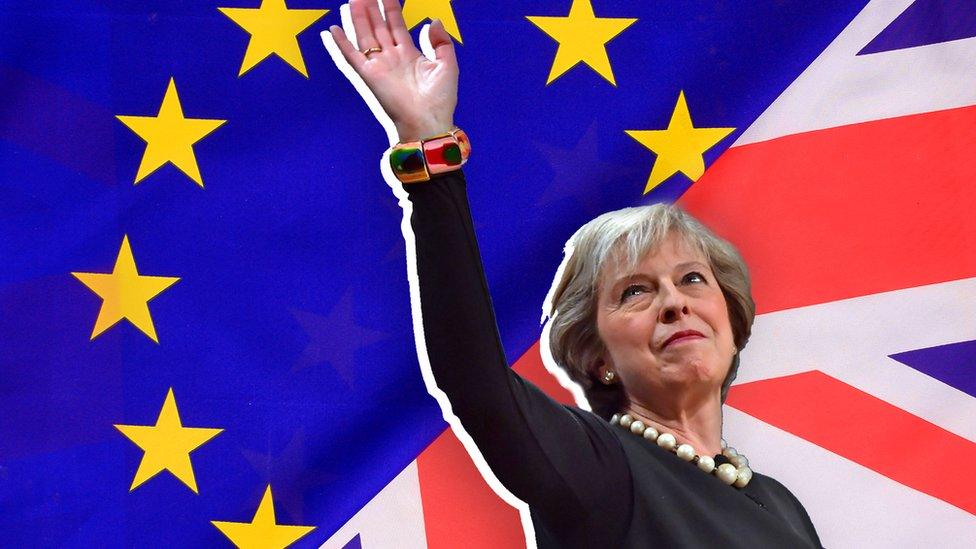
Prime Minister Theresa May resigns after the rejection of her deal and the results of the European elections
After the European election defeat May announces that she will step down as Conservative leader on 7 June.
23 July 2019: Boris Johnson made PM
Boris Johnson is voted in by Conservatives as their new leader, becoming prime minister the next day. He promises to take Britain out of the EU on October 31 - with or without a deal.
A no-deal Brexit means means the UK would leave the European Union (EU) and there would be no agreements in place about what the relationship between the UK and the EU will be like in future.
9 September 2019
Queen Elizabeth II gives her approval to a law that would force the government to delay Brexit if it is not able to strike a withdrawal deal with Brussels.
2 October 2019
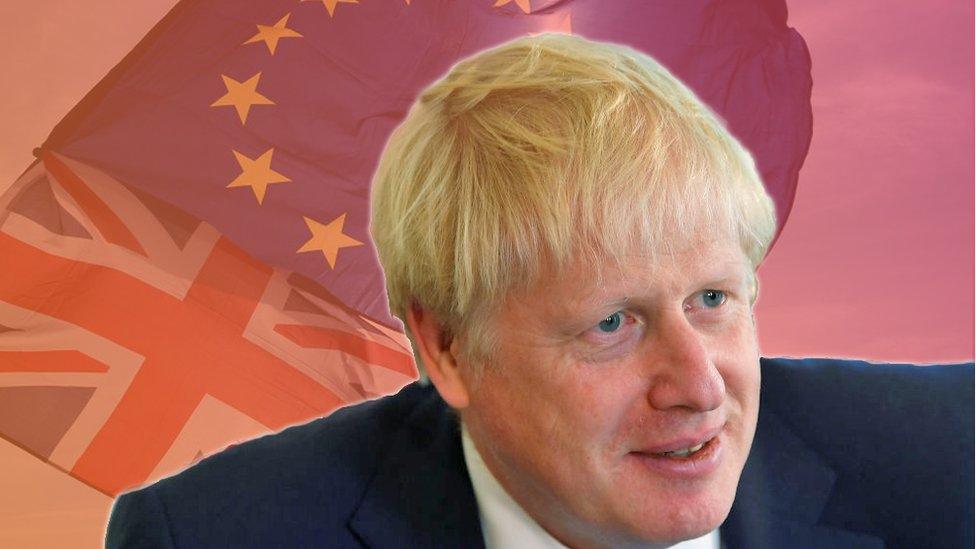
Boris Johnson wants to take Britain out of the EU on 31 October
Prime Minister Boris Johnson publishes his "final" Brexit proposals, which are rejected by the EU.
10 October, 2019
The prime minister and his Irish counterpart Leo Varadkar say they see a "pathway" to a deal after talks over the main sticking point - how to keep open the border, for trade and travel, between the British province of Northern Ireland and the Irish Republic, a member of the EU.
The backstop is meant to be a last resort to keep an open border in Ireland - whatever happens in the Brexit negotiations.
It would mean that Northern Ireland, but not the rest of the UK, would still follow some EU rules on things such as food products.
17 October 2019
The European Union and Britain announce their agreement on a new draft Brexit agreement.
It is then supported at a key EU summit by the other 27 EU members, but also needs approval by the British and European parliaments.
19 October 2019
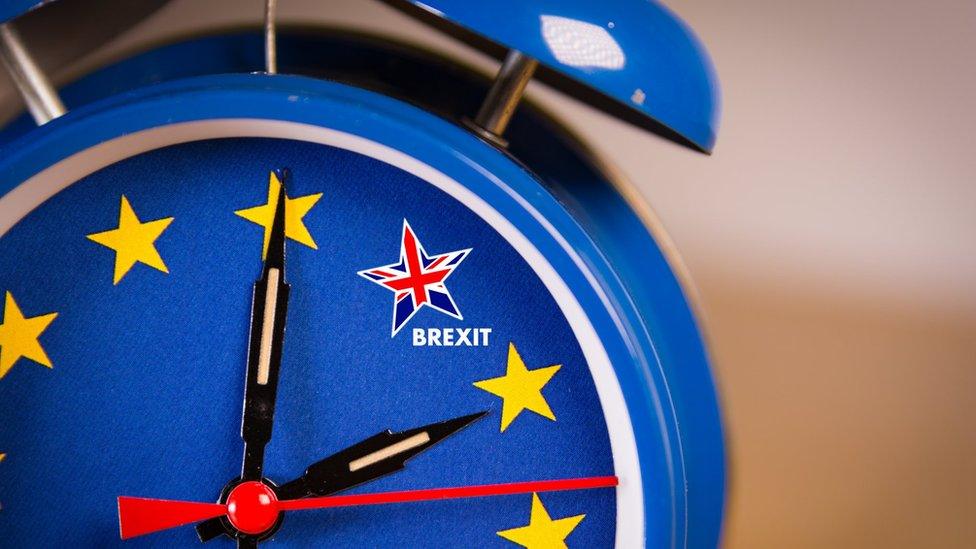
MPS votes to delay a draft deal making 31 October deadline very unlikely
The British parliament sits on a Saturday for the first time in 37 years, but MPs vote to delay a decision on the draft deal, arguing they need more time to study its contents before the October 31 deadline.
It means Johnson has to seek another Brexit delay from the EU which is accepted on 28 October.
29 October 2019 - General Election Called
Parliament approves a general election on 12 December.
31 October 2019
The second Brexit deadline passes without a deal being done
5 December 2019 - Boris Johnson wins General Election
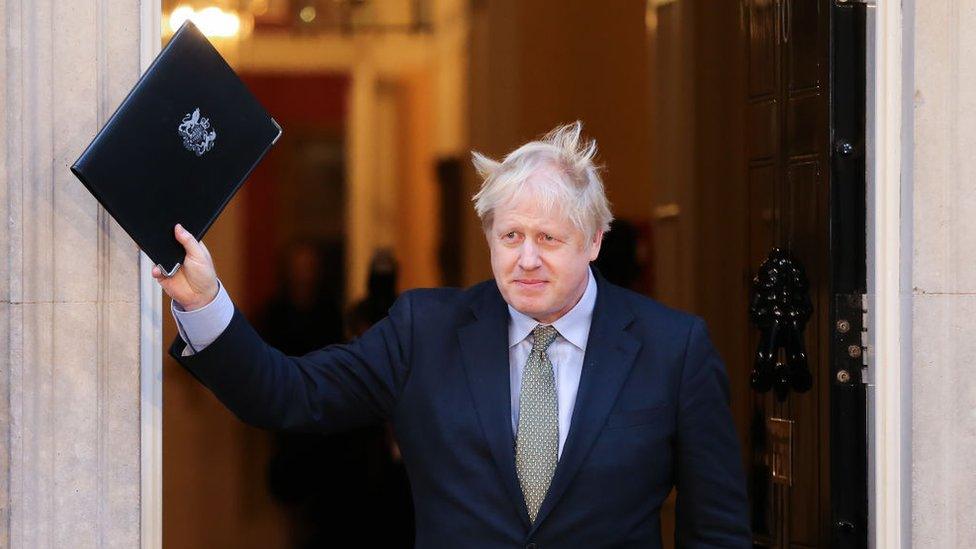
Boris Johnson's Conservative Party wins the general election with a majority of 80 seats
23 January 2020
The UK's EU Withdrawal bill becomes law, after a smooth passage through Parliament compared to the earlier difficulties.
29 January 2020
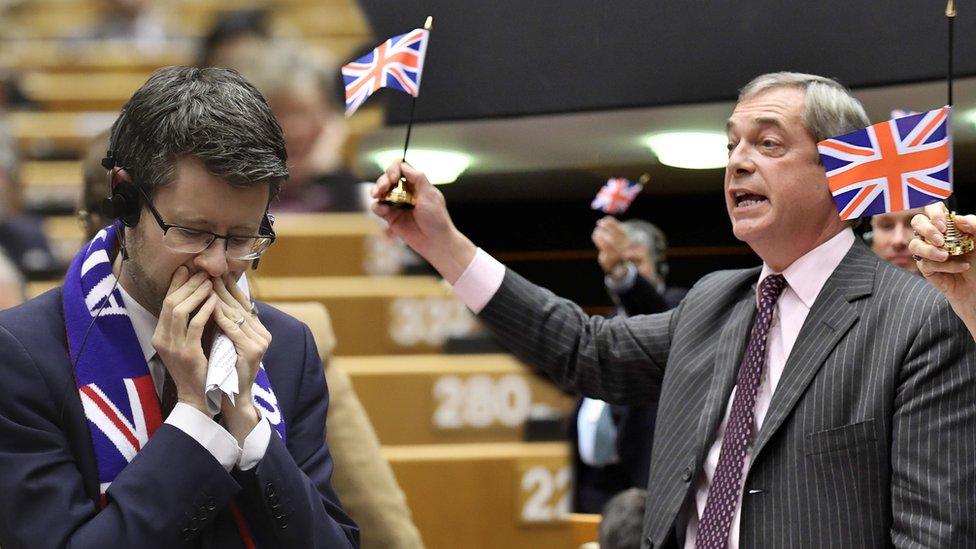
The European Parliament passes the deal between the EU and the UK
31 January
The UK officially leaves the EU at 11:00pm UK time (midnight European time).
1 February
An 11-month transition phase begins, running to 31 December 2020.
Most of the pre-Brexit arrangements will remain the same while both sides work out what the future EU-UK relationship will look like.
- Published23 October 2019
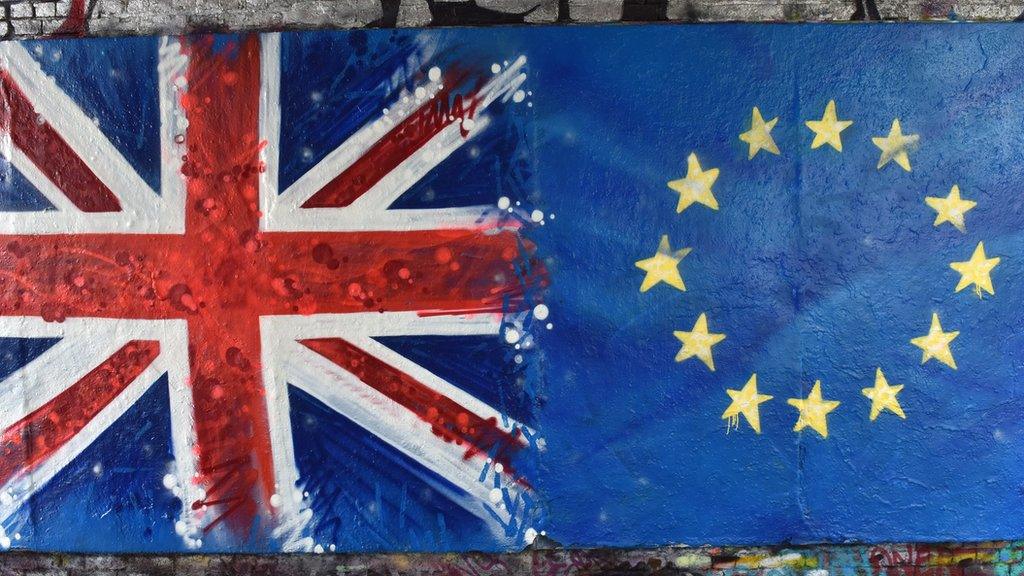
- Published18 October 2018
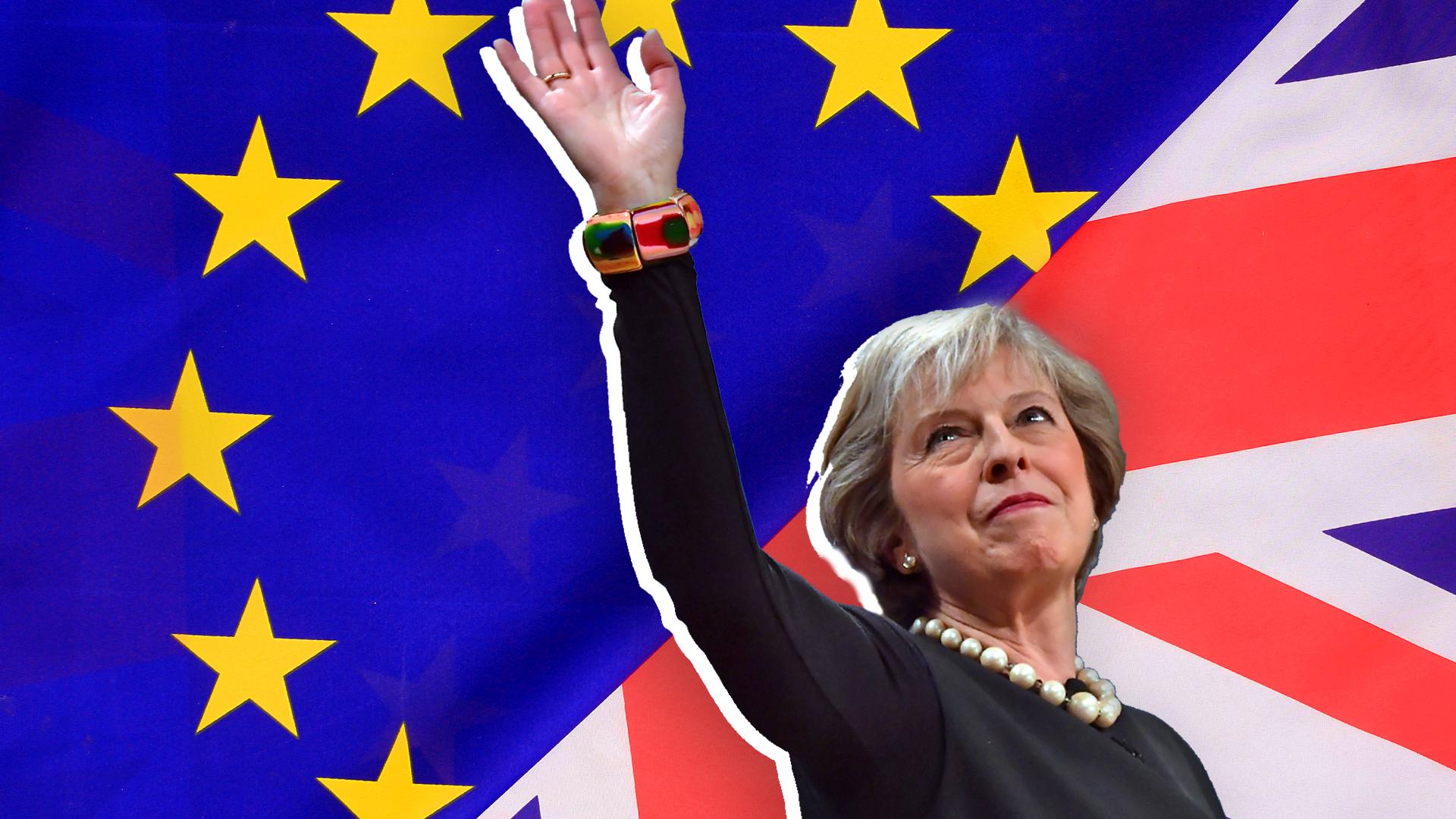
- Published28 November 2018

